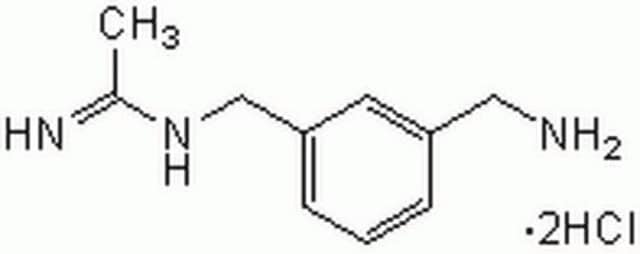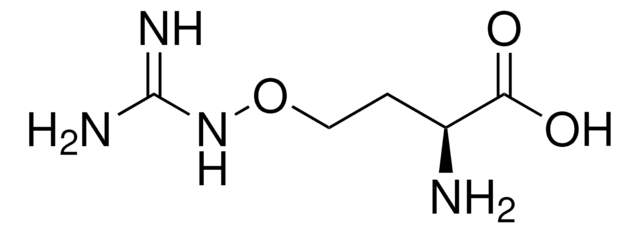W4262
1400W dihydrochloride
>98%, solid
Synonym(s):
N-([3-(Aminomethyl)phenyl]methyl)ethanimidamide dihydrochloride
About This Item
Recommended Products
Assay
>98%
form
solid
storage condition
desiccated
originator
GlaxoSmithKline
shipped in
wet ice
storage temp.
−20°C
SMILES string
Cl[H].Cl[H].CC(=N)NCc1cccc(CN)c1
InChI
1S/C10H15N3.2ClH/c1-8(12)13-7-10-4-2-3-9(5-10)6-11;;/h2-5H,6-7,11H2,1H3,(H2,12,13);2*1H
InChI key
WDJHSQZCZGPGAA-UHFFFAOYSA-N
Gene Information
human ... NOS1(4842) , NOS2(4843) , NOS3(4846)
Application
- as a strong inhibitor of inducible nitric oxide to analyse its effect on intestinal ischemia/reperfusion (I/R) injury model in rat
- as inducible nitric oxide synthase (iNOS)-selective inhibitor, to elucidate the mechanism of PM10-induced endothelial dysfunction
- to study its efficacy on renal ischemia/ reperfusion injury in rats
- as iNOS inhibitor to investigate its ability to counteract spatial memory deficits after hypobaric hypoxia reoxygenation
Biochem/physiol Actions
Features and Benefits
Storage Class Code
11 - Combustible Solids
WGK
WGK 3
Flash Point(F)
Not applicable
Flash Point(C)
Not applicable
Personal Protective Equipment
Certificates of Analysis (COA)
Search for Certificates of Analysis (COA) by entering the products Lot/Batch Number. Lot and Batch Numbers can be found on a product’s label following the words ‘Lot’ or ‘Batch’.
Already Own This Product?
Find documentation for the products that you have recently purchased in the Document Library.
Customers Also Viewed
Articles
DISCOVER Bioactive Small Molecules for Nitric Oxide & Cell Stress Research
Our team of scientists has experience in all areas of research including Life Science, Material Science, Chemical Synthesis, Chromatography, Analytical and many others.
Contact Technical Service












